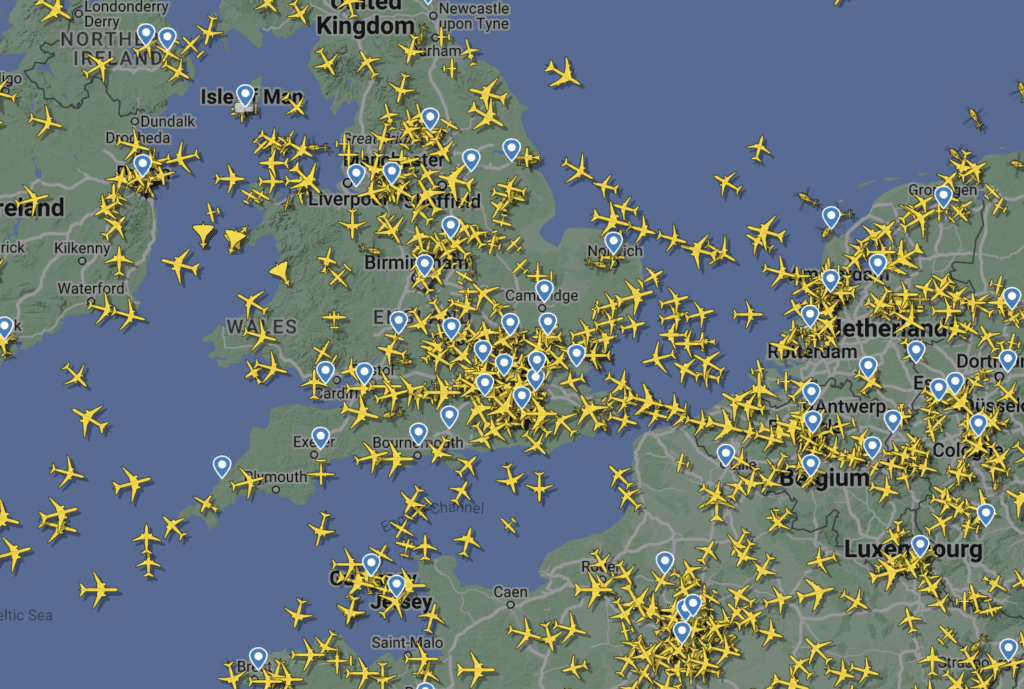Flightradar24 is a popular platform that allows users to track live flights in real-time using an interactive map.
Whether you’re an aviation enthusiast or just curious about a plane flying overhead, Flightradar24 provides valuable information on various aircraft, including their origin, destination, and type.
However, at times, users may encounter issues with planes not showing up on the platform.
This article explores the possible reasons Why Flightradar24 Not Showing Planes.
Why Flightradar24 Not Showing Planes?
There are several reasons why a plane may not be visible on Flightradar24 such as:

1. Lack Of ADS-B Transponder
Automatic Dependent Surveillance-Broadcast (ADS-B) is a key technology used by Flightradar24 to track and display aircraft positions on the platform.
An ADS-B transponder installed on an aircraft broadcasts information such as its location, altitude, speed, and identity.
Flightradar24 relies on a network of ground-based ADS-B receivers to collect this data and display it on their map.
However, not all aircraft are equipped with ADS-B transponders. Some older aircraft models, or those operating in regions where ADS-B is not mandated, might not have an ADS-B transponder installed.
In such cases, these aircraft will not be visible on Flightradar24, as the platform cannot receive their positional data.
2. Limited MLAT Coverage
Multilateration (MLAT) is an alternative method used by Flightradar24 to track aircraft that are equipped with Mode S transponders but not ADS-B transponders.
MLAT works by calculating an aircraft’s position using the time difference of arrival (TDOA) of its transponder signals at multiple ground-based receivers.
However, MLAT coverage is not as extensive as ADS-B coverage. To determine an aircraft’s position accurately using MLAT, at least four ground receivers must be able to pick up the transponder signals simultaneously.
In areas with limited MLAT coverage, aircraft equipped with Mode S transponders may not be visible on Flightradar24.
3. Insufficient ADS-B Coverage
Flightradar24’s coverage relies on a network of ground-based ADS-B receivers placed around the world.
These receivers collect data from aircraft with ADS-B transponders and transmit it to Flightradar24’s servers. The platform then processes this data to display aircraft positions on the map.
However, ADS-B coverage can be limited in certain areas, especially in remote or sparsely populated regions.
If a plane is flying through an area with little or no ADS-B coverage, it may not appear on Flightradar24. This is because the platform cannot receive the necessary data from the aircraft’s transponder.
4. Restricted Aircraft
Certain aircraft operators, such as military or private flights, may request that their tracking information be hidden or not displayed on Flightradar24.
This is often done to maintain operational security or protect the privacy of individuals on board.
In some cases, these restricted flights may still be tracked by Flightradar24, but their information will not be displayed to users.
As a result, these planes will not be visible on the platform.
5. Incomplete Database
Flightradar24 maintains a comprehensive database of aircraft information, including details like the aircraft’s type, registration number, and operator.
This information is essential for accurately displaying an aircraft’s position and flight details on the platform.
However, there may be cases where an aircraft’s information is incomplete or missing from Flightradar24’s database.
This could be due to a recent change in the aircraft’s ownership, registration, or other factors.
In such cases, the platform may not be able to display the aircraft on the map.

